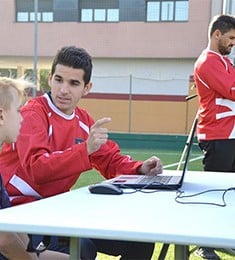Coaching youth soccer isn’t easy. The ultimate goal of youth coaches is to develop talented soccer players and prepare them for the competition that lies ahead. That being said, a winning record is important if they want their players to be recognized as having potential. It’s clear that soccer coaches have their own unique youth soccer coaching styles to find a proper balance, but are there certain elements of youth soccer coaching that every coach can agree on?
At Ertheo, we asked ourselves that same question. We wanted to know whether youth soccer coaches agree on administrative decisions like how to choose their team captains, their players’ positions, or playing time. We also wondered about methodology like how coaches motivate their players and what kind of recovery exercises they implement in practice.
To get to the bottom of it, we surveyed close to 40 youth soccer coaches across all ages and levels, and the results are in! Want to see how you measure up? Click one of the sections below for the results.
Table of contents
Injury prevention and recovery
Overall results
It seems that youth soccer coaching styles vary quite a bit. That is, there doesn’t seem to be one correct way to make important decisions. Of course, our results test coaches of all youth ages and levels, but even so, the variety of answers is a bit shocking.
There doesn’t seem to be much consistency as far as administrative style. Every coach has their own method for choosing captains, playing time, and player positions. That playing being said, certain administrative decisions (e.g. giving older players more time) are less popular than others.
Coaching style and methodology vary as well. However, there seems to be general agreement about methods that do not work like criticizing players to motive them. Additionally, certain coaching methods that seem like they should be universally practiced (e.g. educating players about the importance of a healthy, balanced diet) are not practiced by all coaches.
All in all, these results offer some insight for youth soccer coaches. You can find out what other soccer coaches are doing and even use these results to get ahead of the competition. For example, if other soccer coaches aren’t educating their players about the importance of nutrition, some class time and a simple nutrition seminar could distinguish your players from the rest.

Suggested reading: Coaching youth soccer – 5 secrets to improve your team’s performance based on survey results
Before we discuss specific results, let’s take a look at our participants’ coaching profiles. As discussed, we surveyed coaches of practically all youth ages and levels. It’s important to take into account this variety when analyzing the results.
Participant coaching profiles
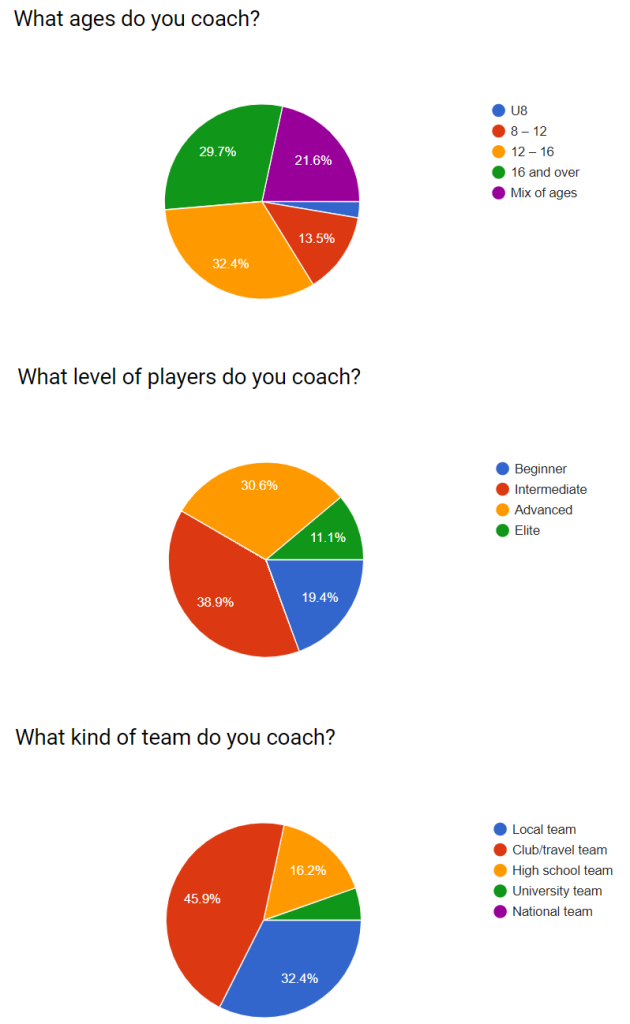
As you can see, the age range and level of players is quite broad. It’s important to note that this survey data doesn’t really apply to coaches of very young players.
Also, only two university coaches participated in this survey, and no coaches reported coaching national teams. This means that we can assume that almost all coaches’ players (with the exception of two) are younger than 18.
As a general rule, the survey results are for coaches of players from eight to 18 years old.
Choosing playing time
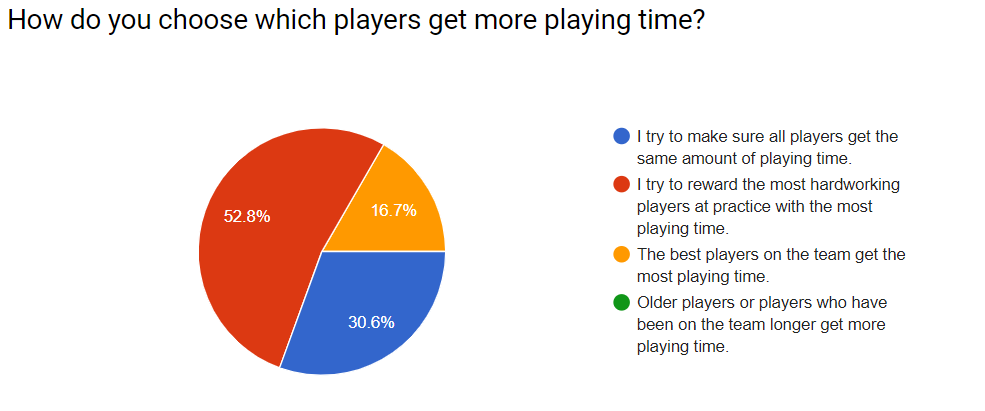
Most coaches reward the most hardworking players with the most playing time. The second most popular option was distributing playing time evenly amongst players. This even distribution of time might be a more popular youth soccer coaching style for coaches of younger players.
It’s important to note that absolutely no coaches report giving older players or players who have been on the team longer more playing time – not even high school coaches report this coaching style. But that doesn’t necessarily mean that coaches agree that this is the worst method for choosing players’ playing time. Check out the results below:
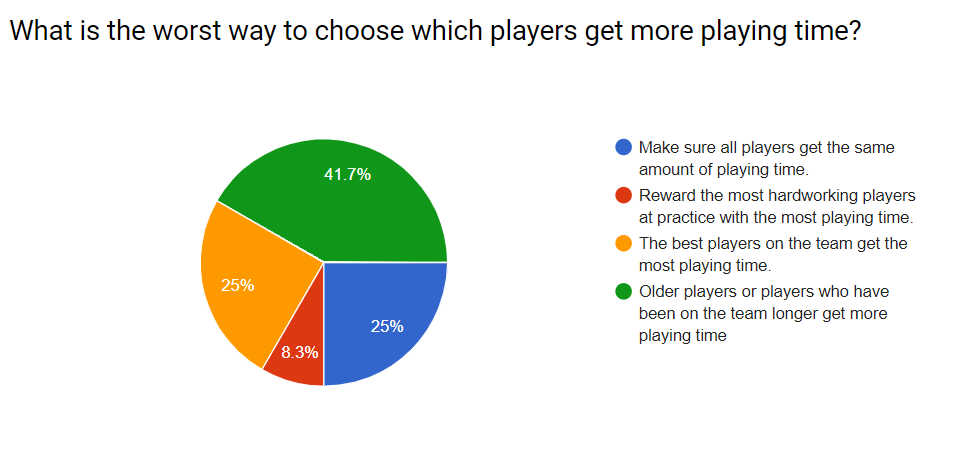
Since no coach reported giving older players more playing time, it would make sense for coaches to agree by at least a majority that this youth soccer coaching style is the worst. However, this option still doesn’t get the majority’s disapproval. Some coaches think that playing the best players is the worst idea. Others think that giving players even playing time is the worst idea.
This indicates that coaches don’t really agree on the worst way to choose playing time. That being said, in line with the results from above, they do seem to agree that giving the most hardworking players the most playing time is NOT the worst idea.
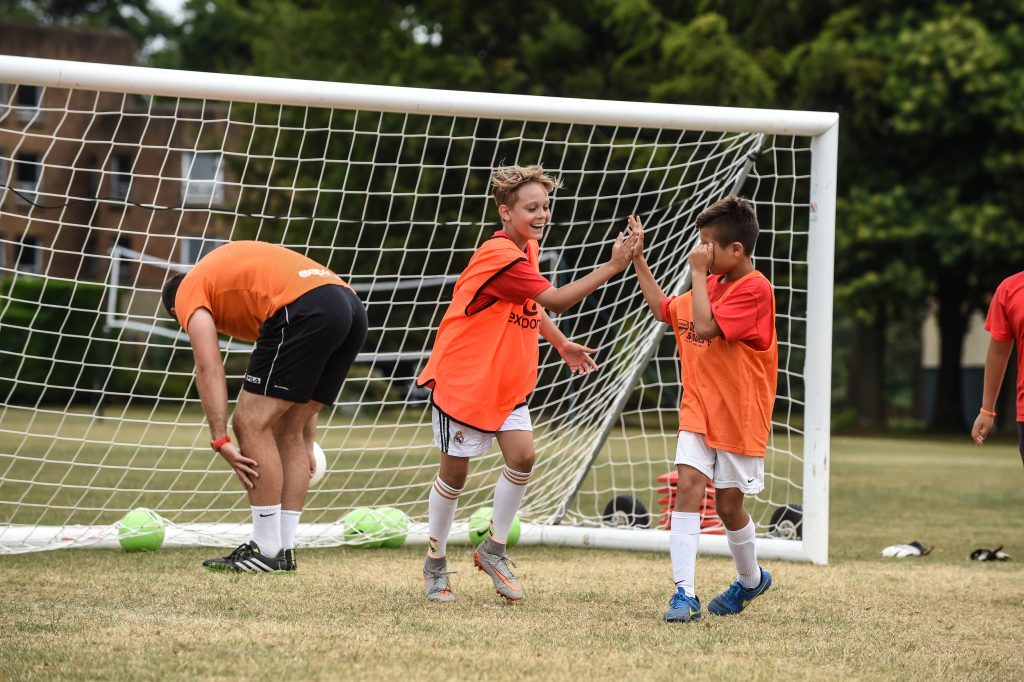
Choosing team captains
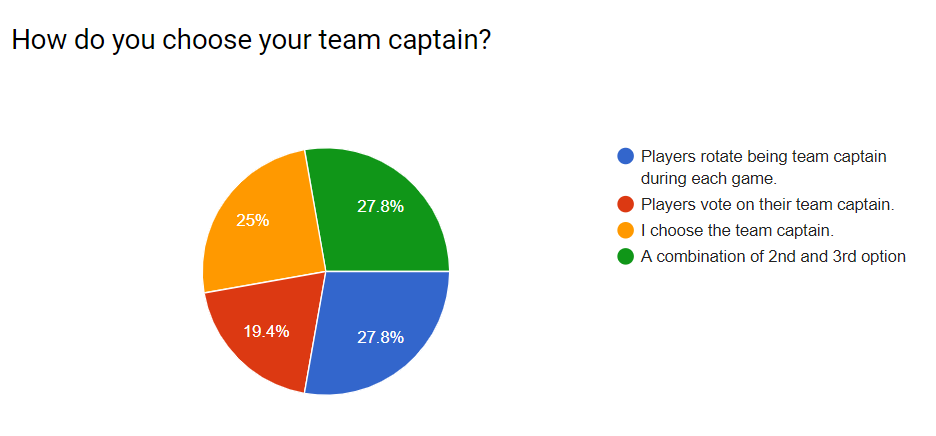
Again, results vary greatly. Some coaches choose their captain. Some coaches let players choose. Many coaches report a combination of both methods where, for example, they nominate some candidates and then players vote.
It’s worth noting that almost 30% of coaches rotate their captains every game. This could be a more popular choice as a youth soccer coaching style for younger players. A chance to be captain for a game could be an extra incentive to encourage hard work. This method also gives more players the opportunity to experience leadership and get comfortable with extra responsibility. And, it gives coaches the opportunity to assess who might be a good captain in the future. For coaches of young players, it seems to be a good and popular option.
Interestingly, there is no one clear “worst way” to choose a team captain either. Coaches condemn all three options fairly evenly. Check out these results:
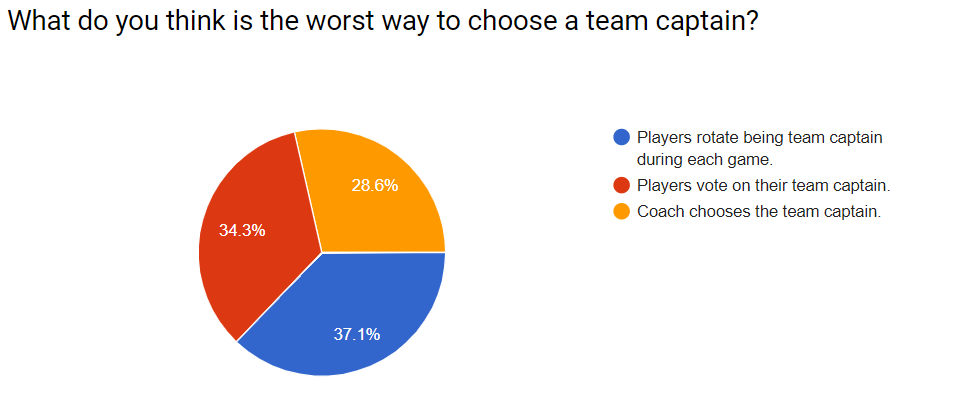

Choosing players’ positions
In terms of choosing players’ positions, our survey results are pretty significant. All coaches in the survey, even for the youngest players, agreed that players should not choose their own positions. So, if that’s how you’re doing it, you might what to rethink your strategy. Check out the results:
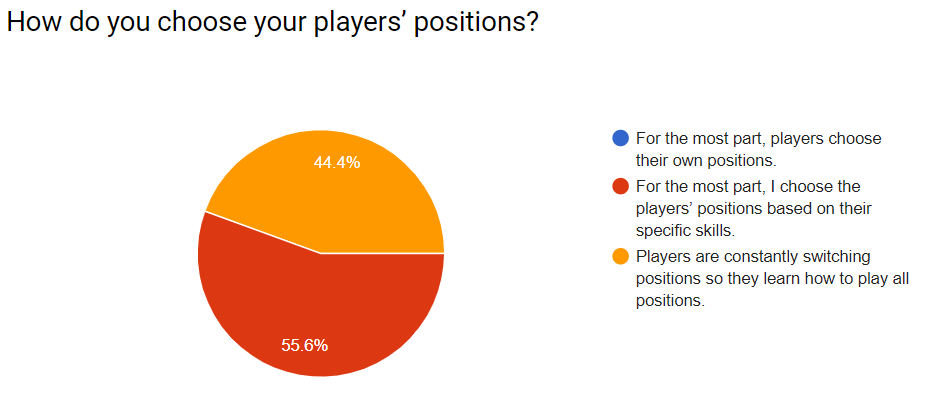
More coaches choose players’ positions based on their skills (about 55%). But the numbers are still relatively even. About 45% of coaches try to play their players in multiple positions so their players learn how to play all positions.
We were a bit shocked that more coaches didn’t report playing their coaches in multiple positions given the many benefits of doing so. Players who play in multiple positions not only experience long-term benefits and future opportunities, but they also experience short-term benefits like immediate improved performance. Playing in multiple positions boosts players’ empathy, teamwork, and spatial awareness. To learn more, click here. We wrote all about it as our final piece of advice for youth soccer coaches.
Injury prevention and recovery
We also asked coaches about their youth soccer coaching styles in terms of injury prevention and recovery. We gave coaches five options and asked them to check all the methods they use during practice.
We expected that coaches of all ages and levels would report implementing stretching exercises and educating their players about the importance of proper nutrition. We were shocked to find that this isn’t the case. Check out the results:
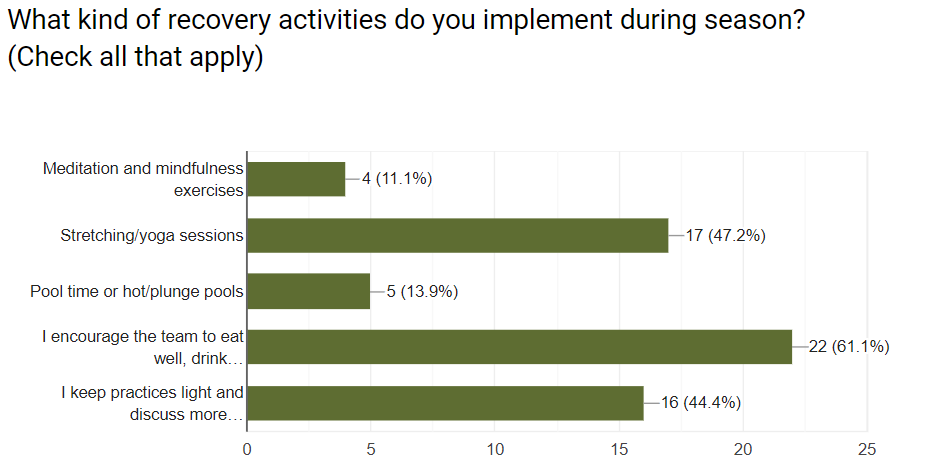
While most coaches report educating their players about the importance of a healthy diet and staying hydrated, that number is only at 61%. A healthy diet is extremely important for proper growth and injury prevention. Not to mention, healthy, strong, energetic players do much better on the field than sluggish, unhealthy, tired players.
We’re not sure why youth soccer coaches seem to neglect nutrition education. Perhaps they misunderstood the question or aren’t aware that nutrition is extremely important for recovery. Regardless, it’s paramount that all youth soccer coaches include nutrition education in their coaching routine.
In our guide, Coaching Youth Soccer – 5 Secrets to improve your teams’ performance, we discuss proper nutrition for youth athletes. Take a look and share the information with your team.
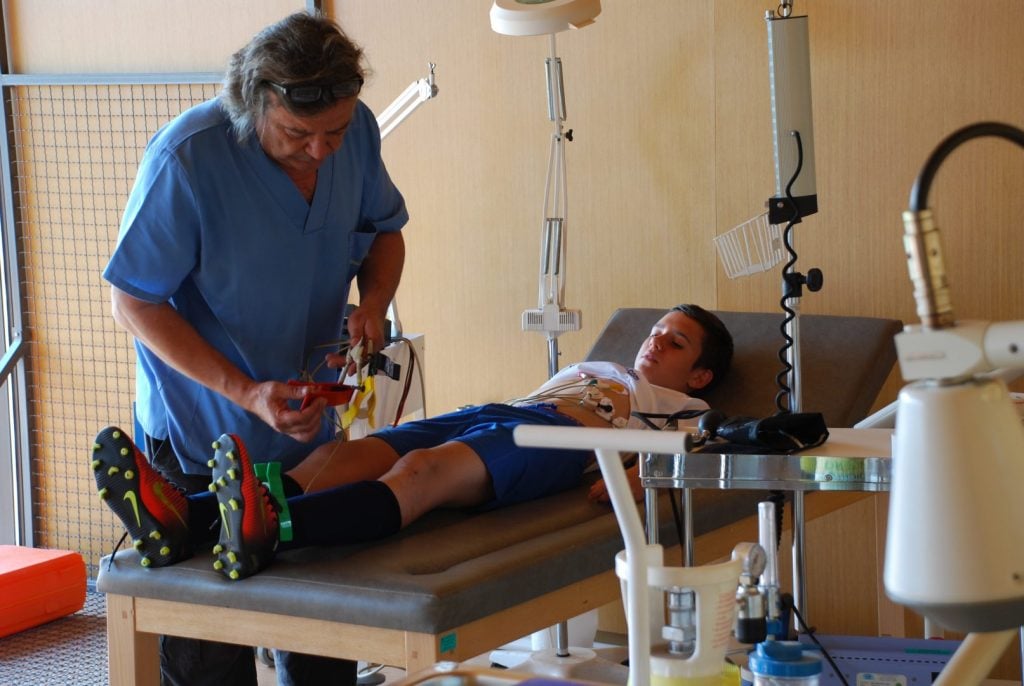
Motivating players
We asked coaches how they motivate players and gave them four answers to choose from:
- I praise hard work when I see it (verbal rewards).
- I make practice more fun when I notice hard work (e.g. Fun games at the end of practice).
- I reward players with fun activities/events outside of practice (e.g. Take the team to get pizza).
- I expect hard work and make players run (or implement some other punishment) when I notice they’re not working hard.
Here are the results:
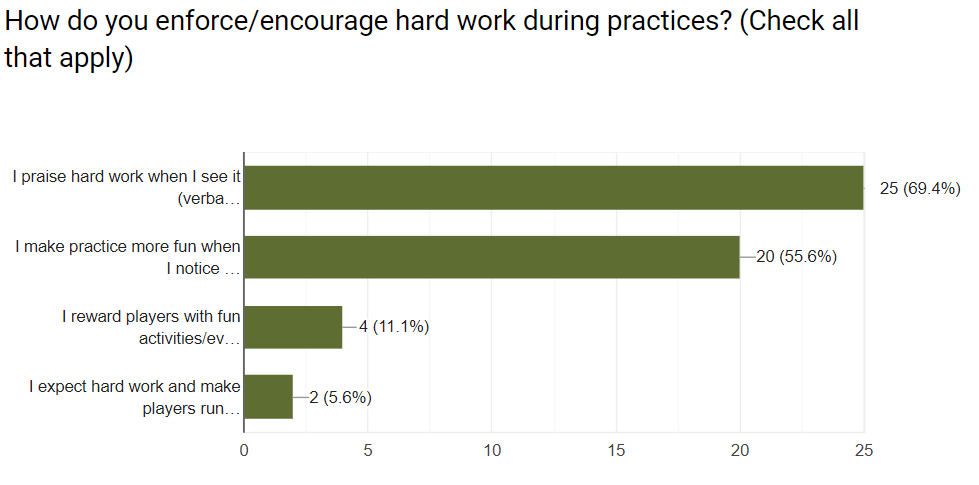
Coaches seem to agree that the best way to motivate players is to praise hard work verbally. About 70% of coaches do this. The majority of coaches (55%) also report rewarding players by including fun games at the end of practice. Very few coaches choose to use a punishment system and punish players for not working hard enough.
Still, it seems strange that not all coaches report using verbal praise, especially since research indicates that verbal praise is very effective in enhancing both athletic and academic performance. If you don’t already verbally praise your players for a great performance, it’s a good idea to start.
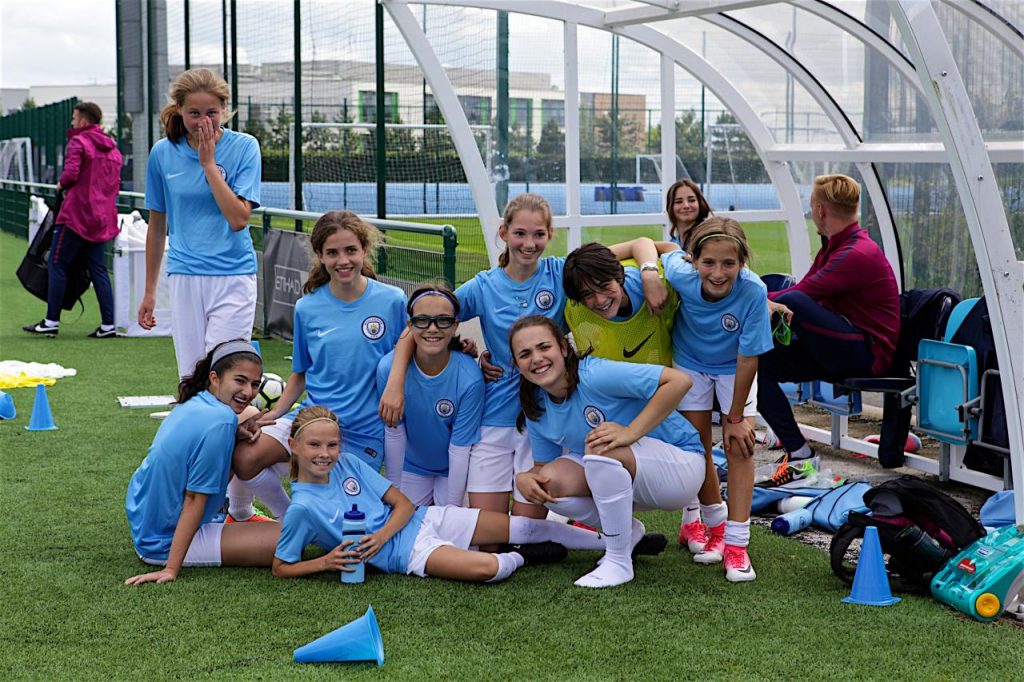
Mental toughness
Mental toughness is very important for athletes at all levels. Learning a new skill can be difficult and often results in failure and frustration. Through mental toughness training, athletes develop resilience and understand how to stay calm under pressure. It’s important for coaches to implement mental toughness training in their youth soccer coaching styles for maximum progress.
Fortunately, our survey results indicate that coaches understand the importance of developing players’ mental toughness. We asked coaches what tactics or exercises they implement during practice to encourage mental toughness and gave them the following options:
- I teach my players to push through the pain and push their limits.
- I introduce noise distractions at practice to train my players’ concentration.
- I yell at and criticize my players to toughen them up.
- I have my players take deep breaths when I notice they’re frustrated.
- I teach my players to visualize positive outcomes.
- I encourage my players to make mistakes because mistakes are part of learning.
- Other, please specify.
- I don’t implement any tactics or exercises to encourage mental toughness.
Here are the results:
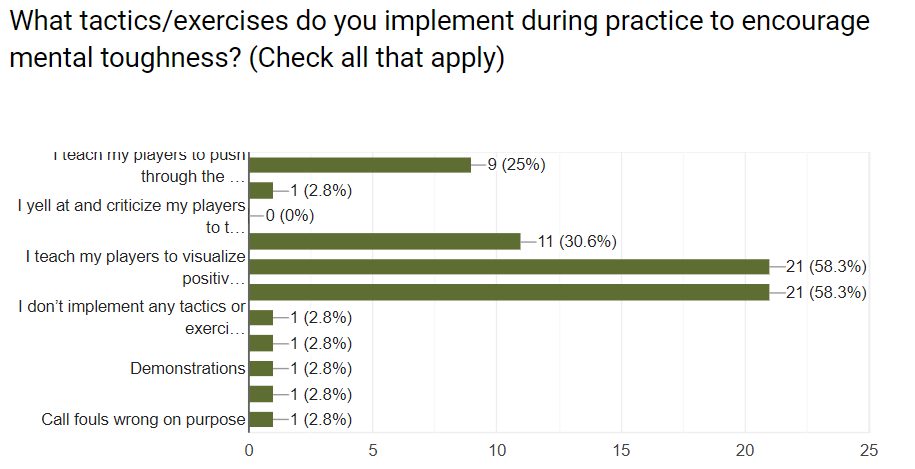
The two most popular methods of improving mental toughness were visualization (visualizing positive outcomes) and encouraging mistakes on the basis that mistakes are a part of learning. About 30% of coaches reported having their players breathe through their frustration, and about 25% of coaches reported teaching their players to push through pain and push their limits. These results are pretty positive and show that coaches take mental toughness seriously and implement mental toughness training in their youth soccer coaching styles.
Did you know that breathing, visualizations, accepting mistakes, and practicing self-compassion are all components of mindfulness training for athletes? Mindfulness meditation for athletes is becoming a popular way to reduce sports anxiety and improve performance. You can read all about it here.
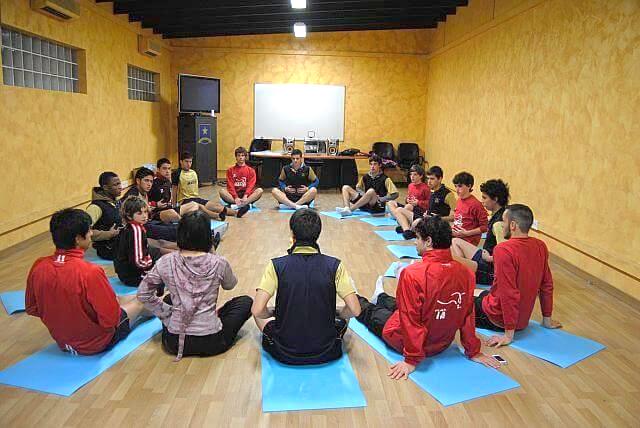
Parental interference
Parental interference with youth sports is becoming a hot topic these days. Many sports psychologists argue that parents are ruining youth sports for kids by being too competitive and too involved with their child’s sport, creating a stressful environment for their child.
On the other hand, research shows that parental support is extremely important to success. The key is in showing support without becoming too overly involved. Read more about the research and how to find the proper balance here.
According to our survey, youth soccer coaches seem to agree. Check out the results:
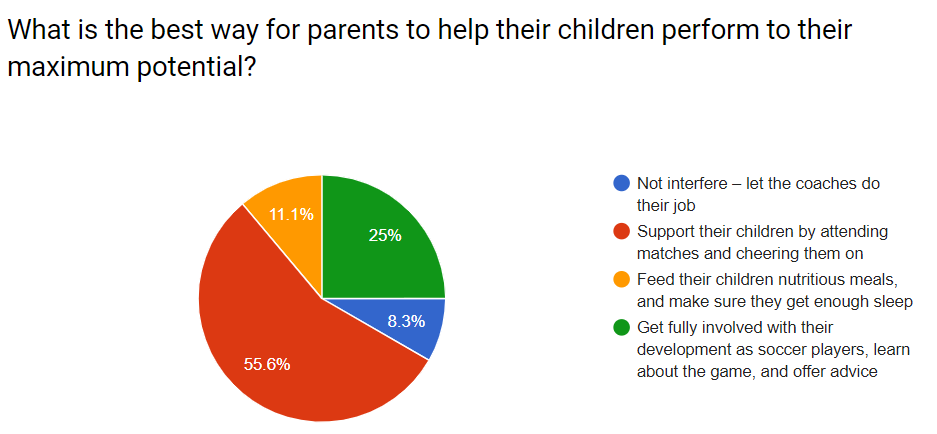
About 55% of coaches agree that the best way parents can support their children is by attending matches and cheering them on. Only 25% of coaches think parents should get fully involved with their child’s development as a soccer player, behavior often described as over-involvement.
There’s a clear distinction between cheering on your child and becoming your child’s second coach. Most coaches agree that the first option is more beneficial.
Discussion
The results indicate that youth soccer coaching styles vary greatly. Of course, this variety could be a result of the age and level differences among coaches. Nevertheless, some results did prove to be significant regardless of the age and level of the players.
These are our most significant findings:
- Youth soccer coaches agree that players should not get playing time based on their age or amount of time they’ve been on the team.
- Youth soccer coaches do not let players choose their own positions.
- Less than 50% of coaches believe in the benefits of playing players in multiple positions.
- Only 61% of youth soccer coaches report educating their players about the importance of proper nutrition.
- Less than 50% of youth soccer coaches implement stretching exercises to promote speedy recovery.
- Most soccer coaches take mental toughness seriously and teach their players mental toughness in creative and useful ways.
- Coaches agree that parents should support their children from the sidelines without becoming over-involved and overly competitive.
These results can help coaches compare their youth soccer coaching styles to other coaches’. How do you measure up? Are you doing more than the average youth soccer coach to develop your players and beat your competition?
Suggested reading: Coaching youth soccer – 5 secrets to improve your team’s performance based on survey results

